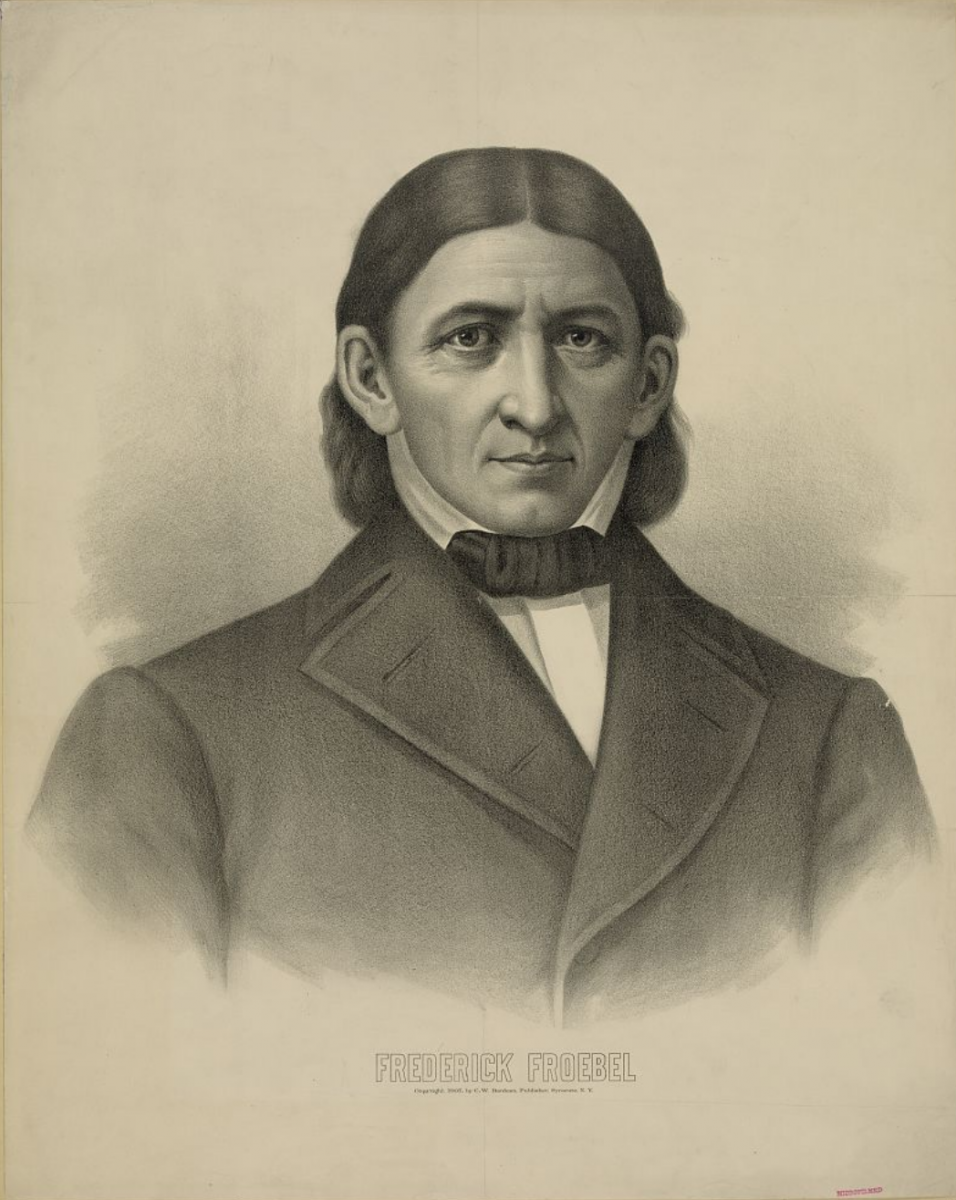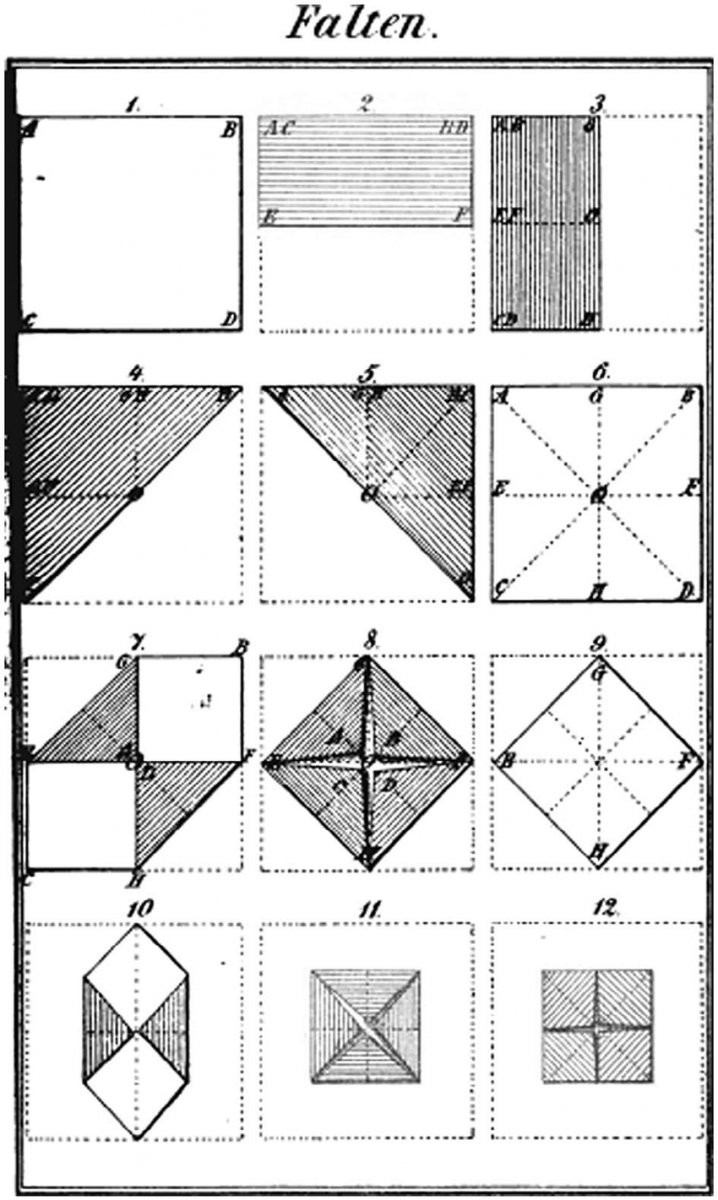- About MAA
- Membership
- MAA Publications
- Periodicals
- Blogs
- MAA Book Series
- MAA Press (an imprint of the AMS)
- MAA Notes
- MAA Reviews
- Mathematical Communication
- Information for Libraries
- Author Resources
- Advertise with MAA
- Meetings
- Competitions
- Programs
- Communities
- MAA Sections
- SIGMAA
- MAA Connect
- Students
- MAA Awards
- Awards Booklets
- Writing Awards
- Teaching Awards
- Service Awards
- Research Awards
- Lecture Awards
- Putnam Competition Individual and Team Winners
- D. E. Shaw Group AMC 8 Awards & Certificates
- Maryam Mirzakhani AMC 10 A Awards & Certificates
- Two Sigma AMC 10 B Awards & Certificates
- Jane Street AMC 12 A Awards & Certificates
- Akamai AMC 12 B Awards & Certificates
- High School Teachers
- News
You are here
Aiding the Teaching of Geometry and Affording Mathematical Recreation: Paper Folding in the Spirit of Sundara Rao of Madras – Froebel’s Kindergartens
Folding bits of paper has a long informal history that stretches around the world; a small part of that story relates to mathematical topics. From at least the 16th century, a few printed geometry textbooks included folded solids [e.g., Billingsley 1570]. Some cabinets of curiosity boasted folded paper models of Platonic solids, and authors such as Albrecht Dürer included patterns for such models in their books [Cromwell 1997, esp. pp. 126–128]. By the 1780s, mathematicians such as A.G. Kästner of the University of Göttingen were using relatively complicated models of polyhedra in their teaching. Some of the surfaces that Kästner used are still held by the Göttingen Collection of Mathematical Models and Instruments.
In the 19th century, as paper became cheap and as the early education of children attracted wider attention,[1] paper folding became part of the learning of much younger people. In particular, the German Friedrich Froebel (1782–1852) and his disciples in the kindergarten movement developed special paper and patterns for paper folding by their students. Froebel, born in a small town in central Germany, opened a school in Thuringia (Germany) in 1816. During the 1830s, while charged with administering a Swiss orphanage, he began to consider the teaching of very young children. Froebel started a school for them in 1837 and soon dubbed such places for the cultivation of children “kindergartens.” In the course of the 1840s, he vigorously promoted kindergartens through publications, training schools, travel, and sales of apparatus. Germany had seven kindergartens in 1847, and another forty-four opened in the revolutionary year of 1848. Then, in 1851, Prussian authorities banned kindergartens as socialistic and atheistic.[2] Froebel died the following year, and his disciples scattered across Europe as well as to Great Britain, the United States, and India, where they concentrated in the Madras Presidency (Province).

Figure 2. Lithograph of Friedrich Froebel by C. W. Bardeen, ca 1897. Library of Congress.
To occupy the hands and improve the minds of kindergarten students, Froebel had introduced a series of some twenty “gifts” or “occupations.” These ranged from a simple set of cloth balls; to a variety of wooden blocks, sticks, slats, and jointed slats; and to devices for drawing, sewing, weaving, interlacing, making skeleton models, and modelling clay. Square sheets of paper could be folded and cut into attractive patterns (the thirteenth gift) or folded into interesting forms (the eighteenth gift). Froebel himself emphasized folding squares and rectangles in order to deduce relationships between the areas of squares, rectangles, and triangles, introducing basic principles of geometry [Froebel 1903, pp. 96–117]. Other kindergartners, as kindergarten teachers were then known, emphasized somewhat different geometric relationships, including creating an equilateral triangle [Ronge and Ronge 1858, pp. 47–48]. During the same period, children were encouraged to fold attractive patterns, sometimes in the form of a square and at other times in more complex patterns intended to resemble organic forms. Examples of such paper folding survive in scrapbooks prepared by teachers in training.[3]

Figure 3. A presentation of Froebel’s process for folding from Hermann Goldammer’s
Fröbels Beschäftigungen für das vorschulplichtige Alter (Berlin: Habel, 1874), plate 40/p. 617.
Reprinted in [Friedman 2018] and available via a CC BY-NC-ND 4.0 license.
[1] On the development of techniques for manufacturing paper less expensively—which encouraged the manufacture and diffusion not only of paper folding but also silhouettes, playing cards, textbooks, board games and a host of other products, see Mueller [2014].
[2] An extensive literature on Friedrich Froebel and the dissemination of the kindergarten in Europe and the United States exists. See Beatty [1995]; Brosterman [1997]; Cosgrove [1989]; and Allen [1988].
[3] Brosterman [1997, p. 79] shows a paper folding album from Philadelphia created around 1875. The Margaret MacLachan Papers in the National Louis University Archives and Special Collections, Chicago, contain samples of her paper folding from when she trained as a kindergarten teacher in the 1890s. The Museum of Modern Art in New York has a scrapbook of paper folding designs compiled by Fannie E. Kachline in the 1890s.
Peggy Aldrich Kidwell (National Museum of American History, Smithsonian Institution), "Aiding the Teaching of Geometry and Affording Mathematical Recreation: Paper Folding in the Spirit of Sundara Rao of Madras – Froebel’s Kindergartens," Convergence (March 2023)




